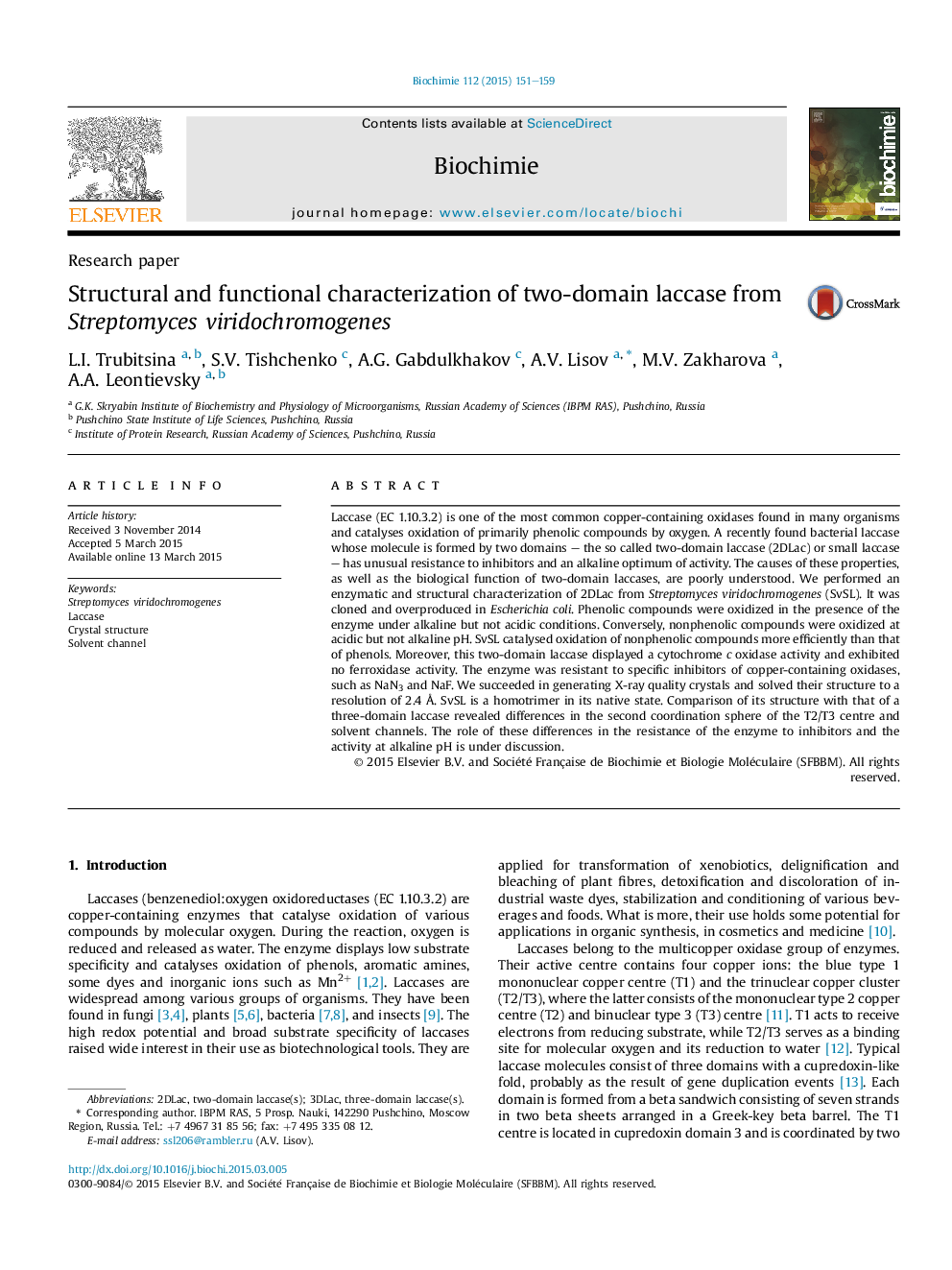| Article ID | Journal | Published Year | Pages | File Type |
|---|---|---|---|---|
| 1952021 | Biochimie | 2015 | 9 Pages |
•2DLac of S. viridochromogenes is resistant to inhibitors NaN3 or NaF.•The enzyme oxidizes phenolic compounds at alkaline pH.•Solvent channel structure hinders penetration of inhibitors to the active centre.
Laccase (EC 1.10.3.2) is one of the most common copper-containing oxidases found in many organisms and catalyses oxidation of primarily phenolic compounds by oxygen. A recently found bacterial laccase whose molecule is formed by two domains – the so called two-domain laccase (2DLac) or small laccase – has unusual resistance to inhibitors and an alkaline optimum of activity. The causes of these properties, as well as the biological function of two-domain laccases, are poorly understood. We performed an enzymatic and structural characterization of 2DLac from Streptomyces viridochromogenes (SvSL). It was cloned and overproduced in Escherichia coli. Phenolic compounds were oxidized in the presence of the enzyme under alkaline but not acidic conditions. Conversely, nonphenolic compounds were oxidized at acidic but not alkaline pH. SvSL catalysed oxidation of nonphenolic compounds more efficiently than that of phenols. Moreover, this two-domain laccase displayed a cytochrome c oxidase activity and exhibited no ferroxidase activity. The enzyme was resistant to specific inhibitors of copper-containing oxidases, such as NaN3 and NaF. We succeeded in generating X-ray quality crystals and solved their structure to a resolution of 2.4 Å. SvSL is a homotrimer in its native state. Comparison of its structure with that of a three-domain laccase revealed differences in the second coordination sphere of the T2/T3 centre and solvent channels. The role of these differences in the resistance of the enzyme to inhibitors and the activity at alkaline pH is under discussion.
